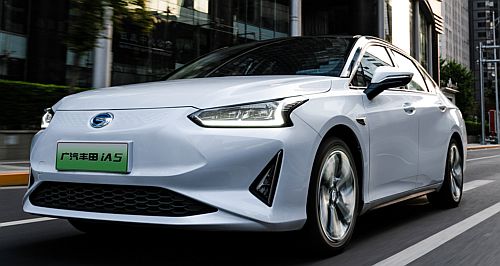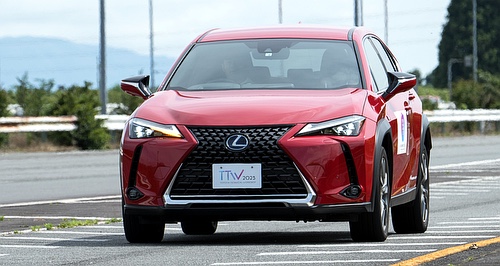News - GACAmmonia a potential ICE saver says GACChinese car maker unveils NH3-powered 2.0-litre engine with 120kW, 90pc CO2 reduction4 Jul 2023 By MATT BROGAN GUANGZHOU Automobile Group (GAC) says it has developed the world’s first car engine to run on ammonia (NH3), offering yet another new energy solution to a mix that aims to reduce global CO2 emissions.
Unveiling the technology at its annual technology day, GAC said its NH3 engine is one of several key industry firsts currently being assessed for production by its in-house research and development team.
The 2.0-litre four-cylinder unit is said to achieve “reliable fuel ignition with 120kW of power” and a 90 per cent reduction in carbon dioxide emissions when compared with a petrol engine of similar capacity.
“We have overcome the pain point of ammonia being difficult to burn quickly and put the fuel to use in the passenger car industry. Its value to society and for commercial uses is worth anticipating,” said GAC research and development spokesperson, Qi Hongzhong.
Mr Hongzhong unveiled the engine alongside technologies that included a flying car called Gove, and a hybrid-hydrogen-powered people moved called Trumpchi, developed with technical partner Toyota.
Ammonia is being considered for use in modified internal combustion engines as a carbon-free alternative to fossil fuels but faces limitations due to its low flammability and high nitrogen oxide (NO) emissions.
Several commercial projects utilising ammonia as an alternative fuel are already underway, primarily in the heavy road transport and shipping sectors where the skills required to handle the toxic substance are better established.
Mitsubishi Shipbuilding is known to have already completed its fuel supply network for marine engines, while New York-based Amogy Inc. is said to be working on a rival system that converts ammonia to hydrogen before using it within a fuel cell that in turn powers a vehicle.
But according to a report published by Bloomberg this week, the use of ammonia as a power source for passenger cars is one that comes with its own difficulties, not least of which is the handling of the gas at an operator level.
“Ammonia is hellish to handle. I can’t see it taking off in passenger cars,” said Bloomberg head of transport and automotive analysis, Colin McKerracher.
Ammonia, commonly used in the production of fertiliser, is a colourless, highly irritating gas which produces a sharp, suffocating odour. It is, however, easily compressed to form a clean, colourless liquid under pressure.
Recent studies, including those by GAC, have found ammonia can combust efficiently via the use of a swirl combustion arrangement, which mixes the gas with oxygen to produce a pale yellow-greenish flame. The gas has an octane rating of 110 and auto-ignites at 651ºC. By way of contrast, standard 91 octane petroleum has an autoignition point of 280ºC.
GAC is a Chinese state-owned vehicle manufacturer which, like many others, offers its own EV brand, Aion. Aion is China’s third-best selling new energy vehicle brand behind BYD and Tesla.
According to Bloomberg, the Guangzhou-based firm has been investing in the research and development of multiple new energy technologies, including EV battery cells that can be charged in 15 minutes in all weather conditions.  Read more14th of June 2023  Toyota details BEV and FCEV futureExecutives reveal plans to become a mobility company, future in batteries and cells8th of June 2023  Synthetic fuel debate rages in EuropeCritics say synthetic fuels ‘a costly distraction from electrification’; Ferrari, Porsche disagree |
Click to shareGAC articlesMotor industry news |
















Facebook Twitter Instagram